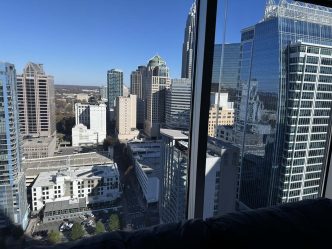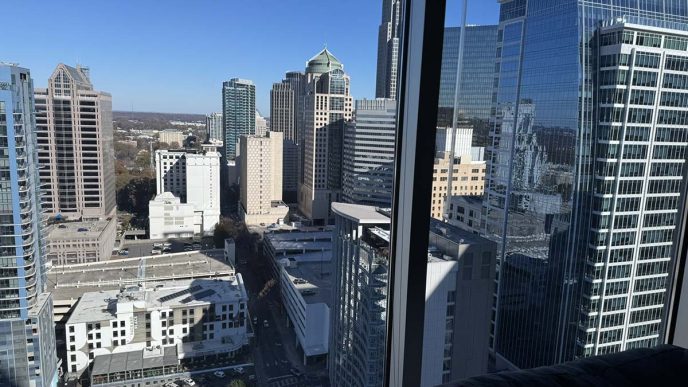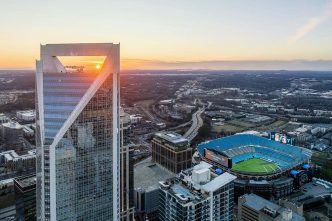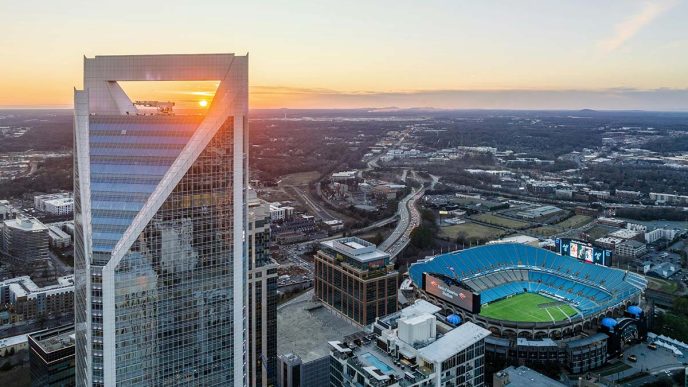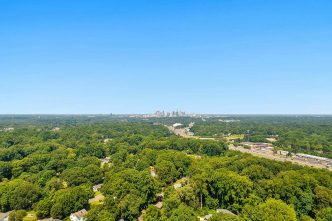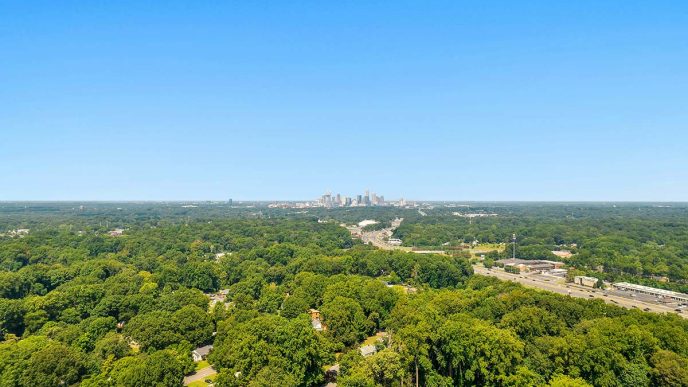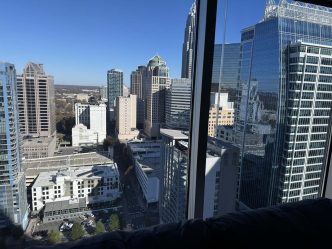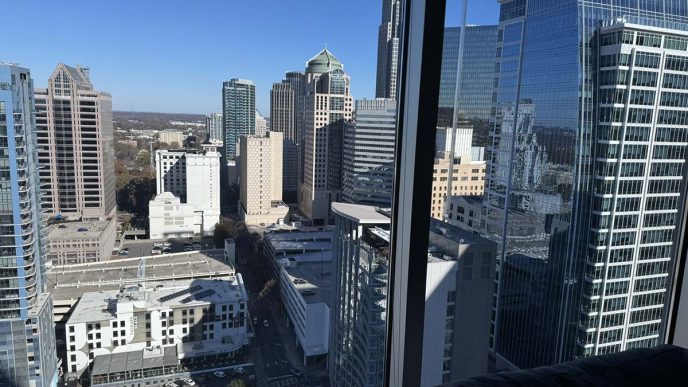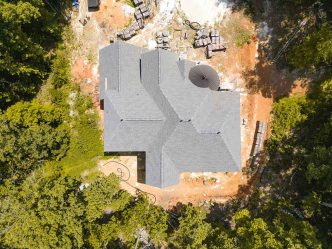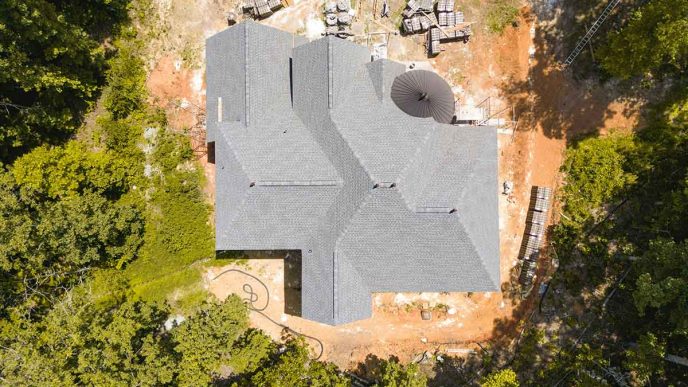Charlotte’s real estate scene has become a strong magnet for newcomers and long-time residents who value the city’s blend of opportunity, comfort, and steady growth. This urban center in North Carolina, widely recognized for major financial institutions and professional sports teams, has witnessed significant housing development. Condos, single-family properties, and townhomes are appearing in many parts of the city. Evidence of progress is clear on any drive around the I-485 loop, where new construction sites and freshly landscaped communities catch the eye. This article aims to provide a friendly look at real estate in Charlotte, highlighting trends, home-buying steps, and personal stories to help readers seeking a place in this growing city.
NEIGHBORHOOD HIGHLIGHTS
Charlotte stands in Mecklenburg County, roughly a few hours from mountain trails in the west and sandy beaches in the east. Many appreciate this because weekend trips are simple to arrange. The city can be divided into distinct areas, each offering its own appeal:
- Uptown: A central hub of offices, high-rise condos, and cultural venues.
- Dilworth: An older neighborhood known for classic Southern architecture.
- Ballantyne: Found in the southern portion of Charlotte, featuring newer communities and an array of shopping centers.
- NoDa (North Davidson): An arts district famous for colorful murals, music spots, and independent restaurants.
- South End: Popular with young professionals who seek modern apartments close to breweries and coffee shops.
Each area has its own unique feel and price range. Some buyers prefer a historic home in Dilworth, while others want modern living in South End. Those aiming for more space often look outside the core in places such as Matthews or Huntersville.
CURRENT MARKET TRENDS
In 2025, the median home sale price in Charlotte hovers around the mid-$400,000s. That’s a big jump from a decade ago, when the median was closer to the mid-$200,000s. Some buyers wonder about timing, but others proceed with confidence, noting Charlotte’s rising population and busy job market anchored by Bank of America and Wells Fargo. The city’s greenery, network of parks, and mild winters also draw families looking for a comfortable climate.
One challenge is achieving a balance between budget and wish list. Popular neighborhoods, such as Dilworth and South End, can spark fierce competition with limited inventory. Suburbs like Matthews or Huntersville often provide bigger yards and quieter streets, while living closer to Uptown reduces commute times. Each approach has merits, and it usually boils down to personal preferences and long-term goals.
PRACTICAL TIPS
Below are suggestions for anyone planning a home search in Charlotte:
- Investigate local amenities. Some communities include parks and shared green spaces. Freedom Park, near East Boulevard, is open daily from dawn until 11:00 PM, offering a lake, sports fields, and walking paths.
- Check real-time data on prices. Consider working with a local agent. An established office, Allen Tate Realtors at 6700 Fairview Rd, Charlotte, NC 28210, offers current listings and scheduling help for showings.
- Attend open houses. The Charlotte Observer and various real estate websites list these events. Weekend open houses often occur from 1:00 PM to 4:00 PM.
- Evaluate commute options. The LYNX Blue Line runs from the University City area southward through Uptown and into South End. Station proximity can save time and parking fees.
- Look at government resources. The Mecklenburg County site (www.mecknc.gov) details tax policies and permits for property owners.
PERSONAL PERSPECTIVES
When I first moved to Charlotte, I found myself traveling up and down Tryon Street, trying to decide on a neighborhood that felt right for my lifestyle. An early fall afternoon in South End stood out. I grabbed a coffee, walked the Rail Trail alongside the LYNX tracks, and felt an inviting energy from the mix of pedestrians, cyclists, and the occasional friendly dog. In that moment, I realized why many newcomers gravitate to this lively spot. Parking can be tough on a weekend, but the light rail offers a solid alternative.
On another day, I took a spontaneous trip to NoDa to see if the creative vibe there might suit me. Bold, eye-catching murals lined the streets near North Davidson and 36th, and I stopped in a cafe for a latte. I could see how an artsy person might consider NoDa the perfect place to buy. Prices have gone up for older mill houses, though every so often a fixer-upper appears. Some folks pivot to Plaza Midwood instead, which offers hip bars, vintage shopping, and housing that spans from bungalows to modern townhomes.
CONDO AND RENTAL OPPORTUNITIES
For those drawn to city living, Charlotte’s skyline has changed considerably, with high-rises near Tryon and Trade Streets. Modern condos often feature rooftop amenities and assigned parking. Homeowners Association (HOA) fees vary, covering communal areas and, in some cases, utilities. Uptown condos appeal to anyone who wants a short stroll to the office or quick access to sporting events at the Spectrum Center or Bank of America Stadium.
Renting is common, especially for newcomers who want to learn about different neighborhoods before buying. The South Park area, near 4400 Sharon Road, places residents close to SouthPark Mall, which usually operates from 10:00 AM to 8:00 PM on weekdays, 10:00 AM to 9:00 PM on Saturdays, and noon to 6:00 PM on Sundays. This part of Charlotte pleases people who enjoy high-end shopping and dining.
SUBURBAN LIFE AND LAKEFRONT LIVING
Those seeking a more suburban rhythm often gravitate to Ballantyne in south Charlotte. It might seem purely residential at first, though commercial buildings line Johnston Road, including hotels and corporate offices. Ballantyne also boasts highly rated schools, and new arrivals often find jobs nearby. Local traffic can slow down in the evenings, but once you exit I-485, you’ll notice sidewalks, playgrounds, and a carefully planned layout.
For a lakefront environment, spots near Lake Norman (Huntersville, Cornelius) promise water activities, marinas, and scenic views. Home prices range from moderate to high, based on proximity to the lake itself. The commute into the city can run 20 to 30 minutes in good conditions, appealing to those who value a quieter lifestyle.
RENOVATIONS, INSPECTIONS, AND BUDGETING
Buyers who have their eye on older neighborhoods such as Dilworth, Myers Park, or Wilmore need to watch for issues like outdated wiring or older roofs. A thorough inspection is vital. Many agents can suggest local inspectors who are familiar with each neighborhood’s quirks. Rates in early 2025 often land in the 5 to 6 percent range, which is higher than a few years ago but still manageable. Checking with multiple lenders can help you find a suitable arrangement.
Charlotte homeowners can visit the Mecklenburg County Code Enforcement office at 2145 Suttle Avenue, Charlotte, NC 28208, open weekdays from 8:00 AM to 5:00 PM, for permits and building code details. The staff there has been courteous in my experience, clarifying guidelines that otherwise might cause confusion.
DAILY LIFE ESSENTIALS
Charlotte offers a wide range of grocery stores, such as Publix, Harris Teeter, and Trader Joe’s. Some locations stay open until 10:00 PM or beyond. One Harris Teeter at 1015 Providence Rd, Charlotte, NC 28207, is typically open 24 hours, convenient for late-night errands. Families also appreciate the city’s extensive park system, managed by Mecklenburg County Park and Recreation. Over 200 parks serve residents looking for walking trails, sports fields, and picnic sites.
School choices factor into many real estate decisions. Charlotte-Mecklenburg Schools (CMS) is large, and performance can differ across zones. Magnet and charter schools are another route, and private schools (Charlotte Latin, Providence Day) have strong reputations as well. When searching for a home in a certain district, it’s wise to confirm boundary lines, since these can shift.
Though Charlotte invests in public transit, most residents still rely on cars. Rush-hour congestion along I-77 and I-85 sometimes causes delays, so the city’s light rail and bus services aim to ease traffic in major corridors. Walkability has improved in certain neighborhoods, including South End and NoDa, where sidewalks and crosswalks are more common. Deciding if you want a shorter commute or more yard space will likely guide your choice.
Summer weather can be hot and humid, driving up air conditioning costs. Homebuyers looking at older properties should ask about insulation and window quality. Snow or ice sometimes appears in winter, and while it usually melts quickly, it’s helpful to plan for a day or two of disruption.
CHECKLIST FOR SUCCESS
A quick reference list can simplify the home-buying process:
- Budget: Decide how much you’re ready to spend and obtain a mortgage pre-approval.
- Neighborhood Goals: Pick a spot that matches your hopes for commuting and everyday convenience.
- Weekend Visits: Walk around prospective areas, checking out local shops and activities.
- Listings: Scan real estate websites or local papers for open houses and available properties.
- Schools: Research zoned districts, magnet programs, or private options if you have children.
- Transit & Highways: Note proximity to the LYNX Blue Line, bus routes, or major interstates.
- HOA Fees: Condo buildings or planned communities often charge monthly dues.
- Inspections: Hire a reliable inspector to spot any structural or mechanical issues.
Spotting a for-sale sign in your chosen part of town can spark excitement. Charlotte’s welcoming atmosphere and ongoing development often make the effort worthwhile. Residents feel proud of a place that seamlessly merges arts districts, historical settings, and suburban comfort.
Real estate in Charlotte features a blend of old and new. Homebuyers can find mid-century gems, newly built towers, or classic Southern layouts. Price fluctuations happen, but strong demand remains, fueled by career openings, recreational outlets, and a friendly environment. Entrepreneurs, professionals, and families alike continue to settle in the Queen City for a chance to put down roots.
One final personal observation: Charlotte surpassed my early hopes. My first months here involved checking out breweries on Central Avenue, cheering for the Panthers at tailgates, and meeting neighbors who made me feel at home. Everything clicked once I found a neighborhood matching my lifestyle. Exploring the city with an open mind usually leads newcomers to discover their ideal spot quickly. Whether you prefer a high-rise condo or a family house with a big yard, Charlotte stands ready with options that might suit your plans.


